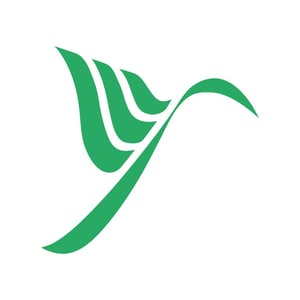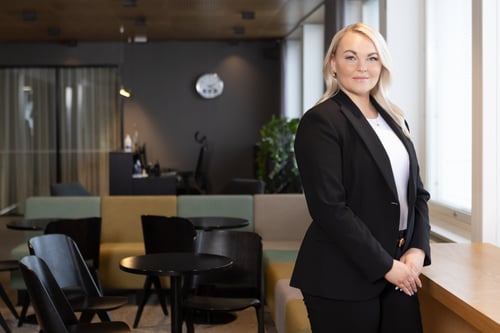"At the exhibition in the L3 Design Dock, really interesting surface patterns and materials were seen in the products of almost 40 Finnish or foreign design companies. We were pleased to see so many innovative lighting solutions, at Habitare Fair as well. Design right protection for the recently published products of unique design can be applied in Europe within 12 months. The costs are as reasonable as for national design protection," our design right experts Milla Lehtoranta and Paula De Andrés Gómez point out.
On the warm Wednesday of September 9, Helsinki Design Week was opened by two significant events: the L3 Design Dock in Jätkäsaari, and Habitare Design Fair at Messukeskus. Milla Lehtoranta, our IP Lawyer, EU Trademark and Design Attorney, and Paula De Andrés Gómez, Design Attorney, visited both exhibitions to see the latest trends in design.
The design of surface materials might also be protected by design rights
"Designers have clearly found new applications for design. For example, unique structures and new materials are introduced in building surfaces and linings as well as acoustic panels," Milla Lehtoranta comments.
As an attorney handling cases of design and trademark rights for a number of clients, among others, in the textile and construction industries Lehtoranta knows that even a prefabricated house with a unique design can meet the criteria for protectable design rights.
"In principle, the visible appearance of any product or its part can, under certain conditions, be protected by design right: the lines, decorative features, contours, colours, surface structures, or materials."
"By protecting, you make sure that you can utilize the results of your design work in business, nationally and internationally," she states.
The idea "small is beautiful" has been introduced in the composition of materials as well
"The thought 'small is beautiful' has been transferred to not only visible design but also the mechanical and technical properties of materials. A material of light weight gives considerable savings in the logistic costs of construction. Minimized use of raw materials, in turn, saves natural resources. Solutions of this kind may be even patentable," Lehtoranta says.
A good example of a novel construction material and implementation of minimalism is the miinus® kitchen launched by Puustelli last year.
Another representative of innovative construction material technology is Durat® which makes various materials for kitchen and bathroom fixtures and structures. The surface colour of composite material, or even the colours of crystals in its core material, can be selected by the customer. They can be matched with, for example, the customer's brand colours.
Large design companies are raising their profile in fields beyond their 'primary area of expertise'
Finnish Woodnotes® has been known for carpets woven by an innovative paper yarn technique for several decades. At L3 Design Dock, Woodnotes® also presented suspendible partitions made of wire mesh, as well as coffee and breakfast tables made of oak.
"It is great that design houses break through new fields in addition to the lines of business which form the backbone of their reputation. The brand and the reputation have already been established, but they are being supplemented with fresh content," Lehtoranta and De Andrés Gómez state.
Lehtoranta recommends that designers of the new generation should protect brand symbols with trademarks. According to the circumstances, design rights can also provide supplementary protection for the shapes of symbols.
>"Success of the designer in business is speeded up – and for example piracy is restrained – by trademark and design rights protected in view of the business needs," she says.
According to Lehtoranta, designers often trust in copyright, but particularly in utility articles, the threshold for a work of art is high and protection cannot necessarily be obtained on the basis of copyright. This is why it is useful to protect a new and unique design with a design right registration in good time.
"New design products published at the fair have a grace period of 12 months. Filed within that period, a Community design right application before the European trademark and design rights authority OHIM, or a national design right application in Finland will, if accepted, help to secure the applicant's rights to utilize the unique design. You should note that the application costs for these two applications are approximately the same," De Andrés Gómez says.
A LED can be organic, not only in its light source but also in its design
In the 21st century, LED lighting technology has entered Finnish streets and homes. At the Habitare Fair opened on 9 September, LED innovations are represented by, among others, Finnish design company Tunto which has already obtained worldwide renown.
"Tunto has introduced organicity into the technical properties of the LED light source itself, as well as in the design and materials of light fittings," states Paula De Andrés Gómez, who has worked together with the designers.
Tunto is a good example of an innovative design company that is also renewing the semantic content of concepts and terms relating to design.



